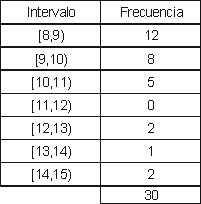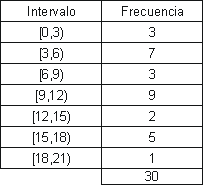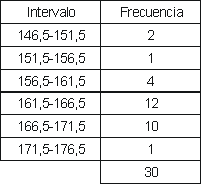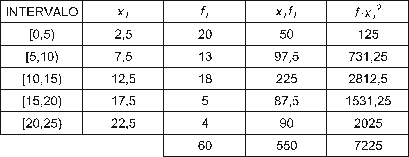Univariate Data Analysis: Frequency Tables, Graphs, and Statistical Measures
1. Household Size Frequency Distribution
When 20 individuals were asked about the number of people living in their homes, the following responses were collected:

a) Frequency Table

b) Distribution Graph

2. Telephones per Household
A telephone company is interested in the number of telephones (including mobile phones) in homes. A survey yielded the following responses:

a) Frequency Table

b) Distribution Graph

3. Multiple-Choice Test Results
In a class, a multiple-choice test with 40 questions was administered. The number of correct answers for each student is as follows:

a) Frequency Table

b) Distribution Graph

4. Days per Week Playing Sports
20 people were asked about the average number of days they play sports per week. The responses are:

a) Frequency Table

b) Distribution Graph

5. Dice Roll Results
A die was rolled 20 times, and the results were recorded:

a) Frequency Table

b) Distribution Graph

6. Sprint Times
In a sprint, the time taken by each participant to cover a fixed distance was recorded in seconds:

a) Frequency Table (intervals of length 1, starting at 8)

b) Distribution Graph

7. Study Hours per Week
Students in a school class were asked about the number of hours they spend studying per week:

a) Frequency Table (intervals of length 3, starting at 0)

b) Distribution Graph

8. Height in Centimeters
The height of 30 people was measured in centimeters:

a) Frequency Table (intervals of length 5, starting at 146.5)

b) Distribution Graph

9. Age Distribution
The age of each person in a group of 30 people was recorded:

a) Frequency Table (intervals of length 5, starting at 0)

b) Distribution Graph

10. Children’s Weight in Kilograms
A medical examination was conducted on 30 children, and their weight in kilograms was recorded:

a) Frequency Table (intervals of length 3, starting at 24.5)

b) Distribution Graph

11. Math Test Scores
The following table lists the scores obtained by a class on a math test:

a) Mean and Standard Deviation



The class average score is 6.1, with a standard deviation of 2.27.
12. Commute Time to School Bus
Students were asked about the time it takes them to get from their house to the school bus:

Mean and Standard Deviation
We find the class mark (xi) for each interval:



Students take, on average, 9.17 minutes, with a standard deviation of 6.03 minutes.
13. Family Size Distribution
50 families were asked about the number of people in their household:

a) Mean and Standard Deviation



The average number of people per household is 3.1, with a standard deviation of 1.1 people.
14. Age Distribution: Mean and Standard Deviation

We find the class mark (xi) for each interval:



The mean age is 15.5 years with a standard deviation of 6.71 years.
15. Dice Roll Results (100 times)

a) Mean and Standard Deviation



The average score is 3.8, with a standard deviation of 1.75 points.
16. Test Score Comparison: Classes A and B
Class A had an average test score of 5.5 with a standard deviation of 2.1. Class B had an average of 7.3 and a standard deviation of 2.6.
Coefficient of Variation

17. Salary Comparison: Companies A and B
Company A has an average salary of 900 euros/month with a standard deviation of 100 euros. Company B has an average of 980 euros/month and a standard deviation of 150 euros.
Coefficient of Variation

18. Weight Comparison: Animal Species A and B
Animal species A has an average weight of 21.3 kg with a standard deviation of 2.5 kg. Species B has an average weight of 125 kg and a standard deviation of 13 kg.
Coefficient of Variation

19. Bookstore Purchases
The number of books purchased by each person entering a bookstore was recorded:

Quartiles and Percentile
Cumulative frequency table:


Interpretation: 50% of people bought 2 books or less, and 50% bought 2 or more. Similarly:

20. Coin Toss Experiment
A coin was tossed, and the number of tosses needed to get the first heads was noted. The experiment was repeated 100 times:

Quartiles and Percentile
Cumulative frequency table:


Interpretation: 50% of the time, 2 or fewer tosses were needed, and 50% of the time, 2 or more tosses were needed. Similarly:

21. Dice Roll Results (120 times)
The results of rolling a die 120 times are summarized below:

Quartiles and Percentile
Cumulative frequency table:


Interpretation: 50% of the time, the score was less than or equal to 3, and 50% of the time, it was greater than or equal to 3. Similarly:

22. Athlete Scores
A group of athletes obtained the following scores in a sporting event (0-5 points):

Quartiles
Cumulative frequency table:


Interpretation: 50% of the athletes scored 4 or less, and 50% scored 4 or more. Similarly:

23. Quartiles and Percentile Calculation

Solution
Cumulative frequency table:


